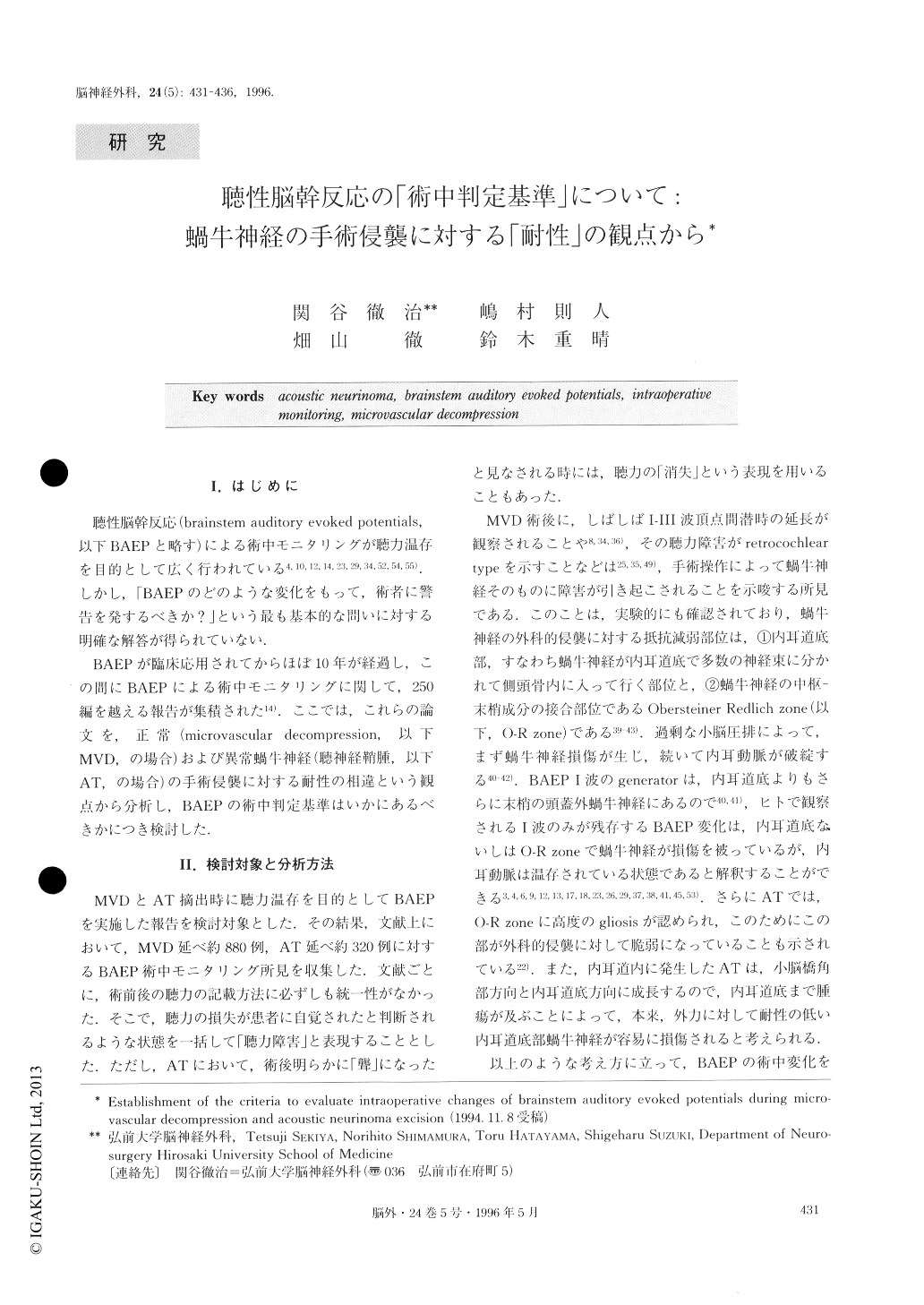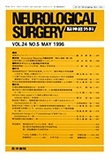Japanese
English
- 有料閲覧
- Abstract 文献概要
- 1ページ目 Look Inside
I.はじめに
聴性脳幹反応(brainstem auditory evoked potentials,以下BAEPと略す)による術中モニタリングが聴力温存を目的として広く行われている4,10,12,14,23,29,34,52,54,55).しかし,「BAEPのどのような変化をもって,術者に警告を発するべきか?」という最も基本的な問いに対する明確な解答が得られていない.
BAEPが臨床応用されてからほぼ10年が経過し,この間にBAEPによる術中モニタリングに関して,250編を越える報告が集積された14).ここでは,これらの論文を,正常(microvascular decompression,以下MVD,の場合)および異常蝸牛神経(聴神経鞘腫,以下AT,の場合)の手術侵襲に対する耐性の相違という観点から分析し,BAEPの術中判定基準はいかにあるべきかにつき検討した.
Although monitoring of brainstem auditory evoked potentials (BAEP) is helpful to preserve hearing during operations in the cerebellopontine angle such as micro-vascular decompression and excision of an acoustic neurinoma, criteria for what and when changes in BAEP should be communicated to the surgeon have not been well established. An exhaustive review was, therefore, conducted of the English and Japanese litera-ture on this topic. Analysis of the results of this litera-ture review led to the conclusion that during a micro-vascular decompression procedure, the surgeon should be warned as soon as progressive prolongation of the latency of wave V of the BAEP exceeds 1.5msec. It is reasonable to apply stricter criteria in acoustic neurino-ma excision; prolongation of wave V latency even less than 0.5msec should be regarded as the warning sign to the surgeon who is trying to preserve hearing. Whenev-er BAEP monitoring is performed, it is crucial that changes in the BAEP are evaluated in light of the par-ticular surgical procedure in progress and that the per-son who evaluates these changes is well versed in the conduct of the surgical procedure.

Copyright © 1996, Igaku-Shoin Ltd. All rights reserved.


